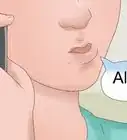X
wikiHow is a “wiki,” similar to Wikipedia, which means that many of our articles are co-written by multiple authors. To create this article, 13 people, some anonymous, worked to edit and improve it over time.
This article has been viewed 86,620 times.
Learn more...
If you ever tried to learn Arabic, let's face it, some of those letters have caused you worries and maybe even kept you up at night, whispering them in the dark. Since these letters are elemental in the Arabic language, let's learn how to pronounce them correctly.
Steps
Method 3
Method 3 of 4:
The challenging part
-
1Okay, so the most difficult ones are really tricky. You have to practice them correctly or they will stick with the wrong sound in your head. One problem is, Arabic letters can be written in Romaji the same way but they each have their own pronunciation. Try to make your tongue light, your control of air pressure in your mouth precise and your throat and teeth more obedient in order to say them correctly.[2]
-
2Read the explanation of the letter's sounds, and try to produce the sounds with accuracy. Take your time! It's okay to taste the letters before saying them. Seeing your mouth's movements in the mirror helps. The difficult letters will be split into two parts[3]
- ح - haa' is the sound you make when you clear your throat, only keep your mouth open when you do. Usually when we clear our throats, we start by holding air then letting it out forcefully. With ح , you end the letter with suddenly cutting the air.
- خ - like forcing phlegm out. I know it's gross, but khaa' requires less effort than you can imagine. End it like ح, with a sudden cut of air. Remember not to put too much pressure on it, just a slight blocking of air will do.
- ص - this one is a bit tricky. Start by saying S normally then pull the middle of your tongue to the base of your mouth, leaving the tip close to your teeth. Now try to make this sound and follow it with a, ending with D. Something like SSaad should be the result. ص is like a magnified version of س
- ض - also like ص, this is a magnified version of د, made by saying D, only pulling the middle of your tongue down. While د is gentle and easy to make, ض or Daad is more of a heavy and deep sound. After pronouncing the sound, open your mouth to add an 'aa' sound and end with normal D.
-
3Take a break! Try to whisper or say the ones above out loud for some time. Don't cram everything at once. You can practice those while doing anything, like working around the house, studying or gardening.
-
4Now for the rest of the letters.[4]
- ط - is forceful sound. Put the tip of your tongue between your teeth, and pull the middle section down. Apply air pressure against your teeth and let it out forcefully. To help, try imagining ط like a pressuring T.
- ظ - unlike ذ, this one requires also pulling the mid-section of your tongue down. End it with an 'aah'.
- ع - this one comes from the throat. It's the sound you make when you gag. Follow it with an 'eain'
- غ - made with literally gargling on air. You probably do this everyday when brushing your teeth and kids do it when they drink to make bubbles in their mouths. End it with 'ain'.
- ق - while ك is made with pushing your tongue to the roof of your mouth while blocking the air in your throat, this one is made with pulling your tongue down while blocking air. Let the air out from the upper behind of your throat. This sound is made in cartoons when a character gulps down a drink.
Advertisement
Method 4
Method 4 of 4:
Practice!
-
1Don't just say the letters on their own. Try to find words with those letter in them. See how they turn out in different positions in the words, beginning, middle or end.
-
2Listening to the pronunciation of those letters helps a lot. But remember not to trust your inner ear for the accuracy of these sounds. It's better to record your voice while saying these words and comparing them later to actual pronunciation.
-
3Be gentle on your throat! Repeating those letter alone all the time might leave you with a sore throat since you're not used to it. Take your time and proceed slowly.
-
4Lastly, read! Learning how to speak by reading gets you used to these letters faster and gives you much less stress than when saying them alone.
Advertisement
Community Q&A
-
QuestionWhich part of mouth do I use to pronounce each letter of Arabic?
 KittyCommunity AnswerEach letter of the Arabic alphabet uses a different part of the mouth. For example, ayn and ghayn use the throat, alif and learn use the roof of the mouth, etc. There is no simple answer to your query
KittyCommunity AnswerEach letter of the Arabic alphabet uses a different part of the mouth. For example, ayn and ghayn use the throat, alif and learn use the roof of the mouth, etc. There is no simple answer to your query
Advertisement
References
About This Article
Advertisement
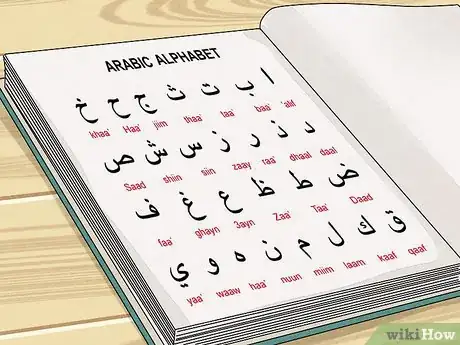
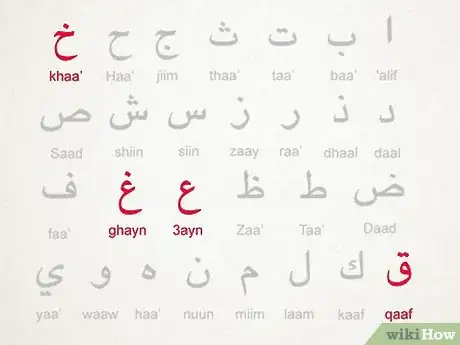
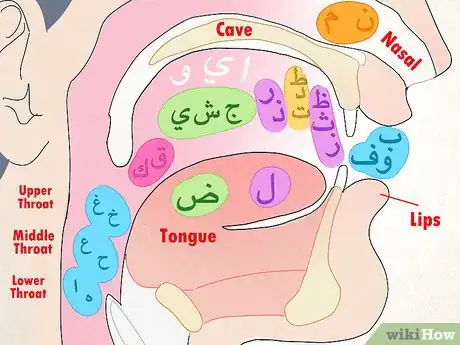
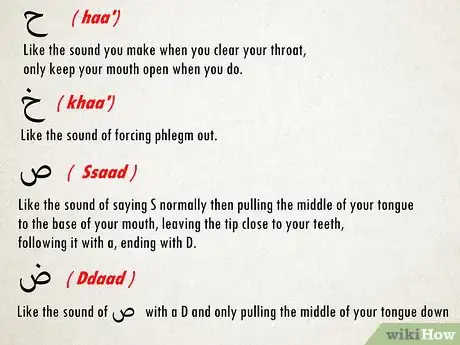
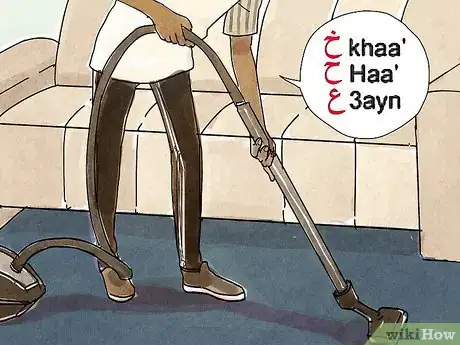
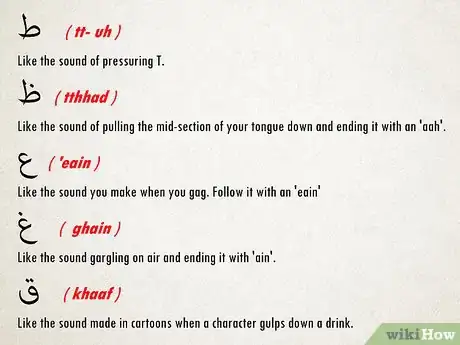
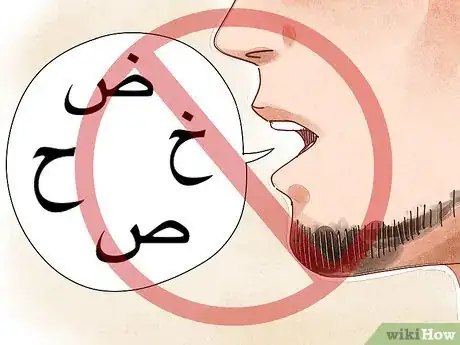






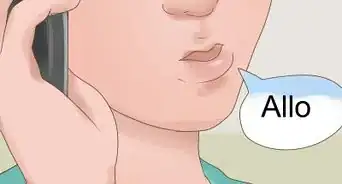



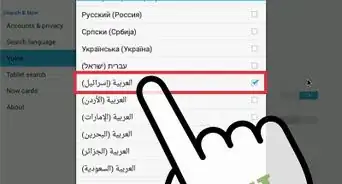

-Step-3-Version-2.webp)









